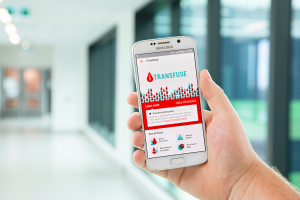
The Australian Red Cross Blood Service (ARCBS) has launched a mobile app for junior doctors to further support safe and effective transfusion practice.
The first-of-its-kind app iTransfuse was launched at the International Society of Blood Transfusion (ISBT) 35th International Congress in Toronto.
Dr Ben Saxon, manager of Transfusion Policy and Education at the ARCBS, told the limbic the app consolidates previously disparate or print-based resources into a form that junior doctors had requested.
“Every intern this year got a copy of our transfusion orientation pack and a number of them said it was great but would be so much more valuable as an app. We experimented with three or four smaller apps and merged all of those based on specific feedback from junior doctors who are our key market here.”
“The app should help them with transfusion decision making, blood administration, looking out for good and bad effects… a one-stop shop on their telephone.”
Dr Saxon, a paediatric haematologist, said they were hoping that most interns on a medical rotation that involves transfusion or surgical rotation would want to download and use the free app.
He said the app helps with dosing of red blood cells and platelets, adverse events, maternity blood management and more.
“If the decision is made to give a transfusion to a patient, the next question is how much blood to give. And there has been quite a lot of controversy over some years about at what haemoglobin threshold should you give a transfusion and how much you should give.”
“So it used to always be an even number – either two or four units for who knows what reason. And now the message is you give one unit and then reassess.”
“In some patients, their haemoglobin is so low, that it’s not going to work so our app gives the messaging about the one unit – which is the current best practice – but for people who are profoundly anaemic who need more than a unit, it will provide an exact volume of blood to give.”
“We’ve taken a lot of the guesswork out of calculating how much blood to give and also aligned it with current best practice.”
The app does not cover advanced transfusion practice such as what blood group to give to somebody during bone marrow transplant whose blood group is changing.
“These are quite technical areas of transfusion practice and while we give advice about identifying, investigating and treating adverse events, it shouldn’t be construed as patient specific medical advice. It’s general advice. If you have anaphylaxis, you treat according to your hospital anaphylaxis protocol. So there are some built in safety limitations.”
The app also includes games to help people understand laboratory practice and ABO typing.
“The specific audience is for junior doctors but a lot of information already there is for junior nurses, e.g. on administration of blood products, and for junior scientists, refreshing their understanding of lab techniques they are using.”
The app does not currently require any log-ins or collect prescriber or patient details.
“We will in the future have the option to subscribe to newsletters or a podcast series for example,” he said.
“We’re excited to be able to launch a performance support app suitable for junior doctors and based on exactly what they’ve told us they want.”